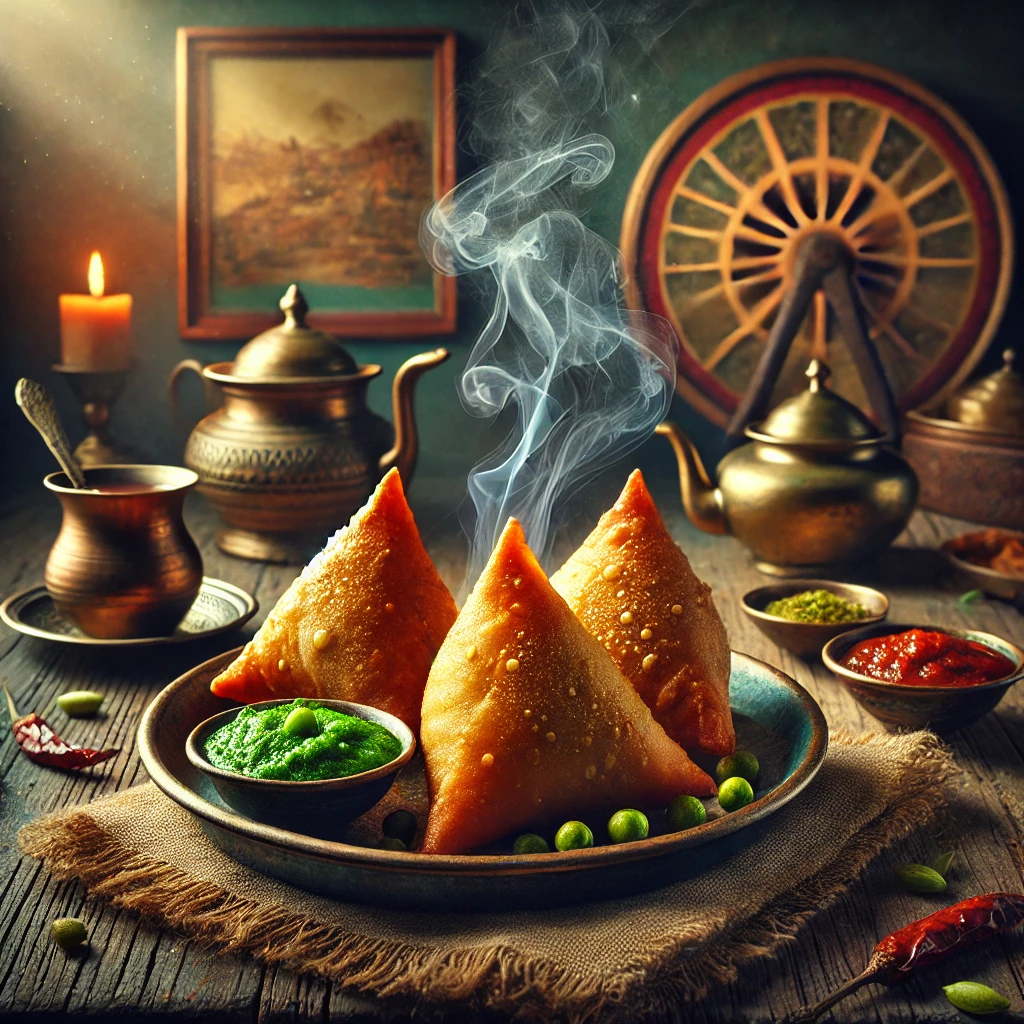There is a very famous and common snack in india and that is called Samosa. The samosa can make all of us crave this golden, crunchy, and delicious snack in an instant. It does not make a difference if it is a rainy afternoon with a cup of hot tea or a festival, samosas are a part of North Indian food culture. Loved by almost all the South Asians and the whole world, these crispy treats have gained hearts and lips around the world. Did you ever wonder about its history, shapes, and making it at home? Let’s explore the universe of samosas!
The History of Samosa
While it’s often linked with Indian cuisine, the samosa itself had origins in Central Asia and the Middle East. It has been found previously to have been in Persia as “Sanbosag.” The savory pastry was taken down the Silk Road by traders and merchants and eventually into the Indian subcontinent. It was later combined with local spices and ingredients and took the form in which we enjoy it today.
Various Kinds of Samosas Around the World
Samosas can be made in many different ways and are enjoyed in different countries around the world. Some of the most common variations are:
Indian Samosa: The traditional triangular pastry filled with spiced potatoes, peas, and occasionally lentils or ground meat. Accompanied by tamarind or mint chutney.
Pakistani Samosa: Typically spicier than the Indian one, and with a crisper shell. Some incorporate shredded chicken or beef.
Bengali Singara: A smaller version with a thinner crust, typically stuffed with potatoes, cauliflower, and peanuts.
African Sambusa: In East Africa, particularly Somalia and Kenya, the samosas are typically stuffed with ground meat and spices.
Middle Eastern Sambousek: Typically baked rather than fried and stuffed with cheese, meat, or lentils.
Regardless of the variation, the nature of the samosa is the same – crispy exterior and tasty, well-spiced filling within.
How to Prepare the Perfect Samosa at Home
Preparing samosas may look complicated, but it is easier than you imagine. Let’s do it step by step.
Ingredients
For the Dough:
2 cups all-purpose flour
2 tablespoons oil or ghee
½ teaspoon salt
Water (as needed to knead the dough)
For the Filling:
3 medium potatoes (mashed and boiled)
½ cup peas (boiled)
1 teaspoon cumin seeds
1 teaspoon garam masala
1 teaspoon coriander powder
½ teaspoon turmeric powder
1 teaspoon chili powder (according to taste)
1 tablespoon ginger-garlic paste
1 green chili (chopped fine)
Salt as required
2 tablespoons oil
Chopped fresh coriander leaves
For Frying:
Oil (for deep frying)
Step-by-Step Instructions
1.Prepare the Dough
Take flour, salt, and oil in a bowl. Add water gradually and knead to a hard dough. Cover and keep aside for 30 minutes.
2. Prepare the Filling
Heat oil in a pan, add cumin seeds and let them splutter.
Add the ginger-garlic paste and crushed green chili. Sauté for a few seconds.
Add the mashed potatoes, peas, and all spices. Mix well.
Heat it up for 2 minutes and then let it be. Add a little chopped coriander to it.
Allow the filling to cool completely.
3. Form the Samosas
Take small portions of dough and roll each one into a thin oval shape.
Cut it in half to get two semi-circles.
Fold both the semi-circles into a cone and seal the edges with a bit of water.
Fill the cone with a spoonful of potato mixture and close the top neatly.
4. Fry the Samosas
Heat oil in a deep pan on medium heat.
Carefully drop the samosas into the oil and fry until golden brown and crispy.
Remove and set them aside on a paper towel to drain excess oil.
Serving Suggestions
Samosas taste best when served hot with tamarind chutney, mint chutney, or ketchup. Pair them with a steaming cup of chai, and you’ve got yourself the perfect snack!
Fun Facts About Samosas
The world’s biggest samosa weighed 153.1 kg (337.5 lb) and was prepared in the UK!
Samosas are not only fried – they are also baked or air-fried in a healthier alternative!
Samosas in Indian nations are stuffed into a bun and consumed as a sandwich samosa pav.
Final Thoughts
Samosas are not only a snack, but an experience of taste that leave you smiling with every bite. Hot, cold, veg or non veg, there is a samosa waiting to be found by you. So give them a go at home and share the fun with family and friends!
The next time you bite into a crunchy samosa, recall that you are enjoying centuries of tradition, culture, and tasty heritage!



